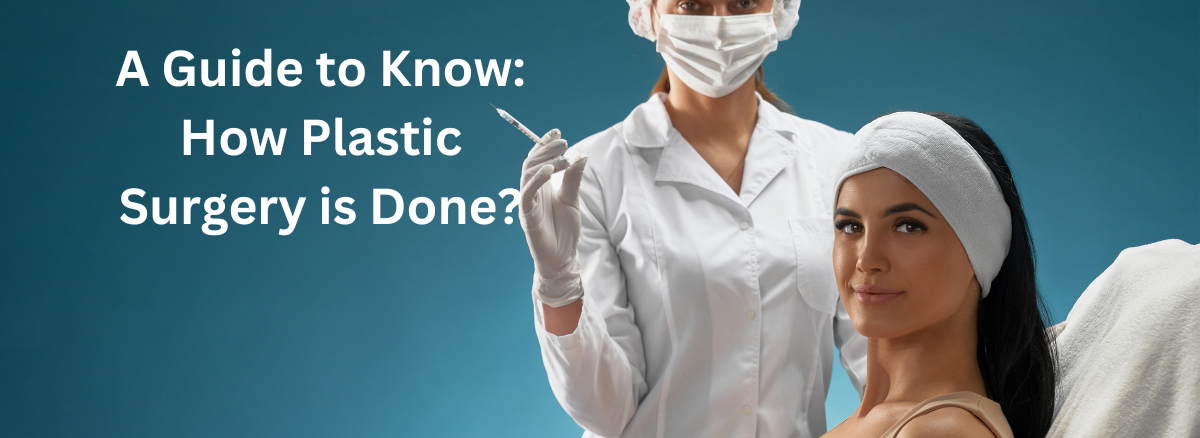Although there is still some negative perception about it, plastic surgery has truly become a transformative field of medicine. It has allowed individuals to improve or restore their outer appearance. Whether it is enhancing the aesthetics of a person or addressing their functional and reconstruction concerns, plastic surgeries ultimately help individuals look better, live better, and work better. lets we will dive into the blog that how plastic surgery is done and how plastic surgery is done on face.
Some of the common reasons for facial plastic surgery are
- Trauma
- Burn
- Facial wound
- Skin destruction due to conditions like skin cancer
Categories like reconstructive surgery (which includes treatment of burns, craniofacial surgery, hand surgery, and microsurgery) and cosmetic surgery, which is mainly done to enhance the appearance of the human body, also fall under plastic surgery. But how is plastic surgery done?
Steps to Know, How Plastic Surgery is Done?
There are a number of ways to move and manipulate body tissue. Before going through this procedure, one should plan a consultation with a plastic surgeon. They thoroughly explain the situation the patient will go through and may give some psychological assessment as well.
The main types of plastic surgery is used to be skin grafts, but advanced techniques like flap surgery and tissue expansion are common as well.
Skin Grafts
A skin graft is a procedure where healthy skin is used to cover lost or damaged skin. The healthy skin is usually removed from an unaffected part of the body.
Skin grafts are mainly done on
- Open bone fractures
- Large wounds
- On areas where skin is surgically removed (in cancer or burns)
At the start of this procedure, the patient will be given a general or local anaesthetic. Its dosage mainly depends on the location and size of the affected area.
The skin graft taken from a healthy portion of the body will usually be held in place using stitches, staples, clips, and special glue. The area will be covered with sterile dressing until the graft is connected to the surrounding blood supply, which usually takes 5 to 7 days.
The healing process of the donor area takes 5 to 14 days, depending on the thickness of the graft taken. The colour of the skin may appear different at first, but with time, it changes.
Tissue Expansion
Tissue expansion appears in the list of newer techniques. This plastic surgery procedures encourage the body to ‘grow’ extra skin by nurturing and stretching the surrounding tissue. The extra-grown skin can then be used to help reconstruct the nearby area.
Tissue expansion may be used in breast reconstruction and repairing large wounds.
Tissue expansion is done under general anaesthetic. An expander is inserted under the skin near the operational area. This is gradually filled with salt water, which causes the skin to stretch and grow. The time of the expansion process varies and mainly depends on the size of the operational area.
For a large area of affected skin, it can take 3 to 4 months for the skin to grow. During this time, the expander creates a bulge in the skin.
After the required expansion, another procedure is needed to remove the expansion and reposition the extra-grown tissue.
This technique has a higher success rate as the repaired area gets the same colour and texture as the surrounding area and has uninterrupted blood supply to the operated area.
Flap Surgery
Another new technique is flap surgery. This procedure involves the transfer of a living piece of tissue from one part of the body to another, along with the blood vessels that keep it alive.
Flap surgery may be used for open fractures and large wounds. There are cases where the surgery was used to improve a cleft lip and palate. In most cases, the skin is partially cut, creating a “flap”. The flap is then repositioned and stitched over the damaged area.
Flap surgery allows for the regulation of blood supply to the repaired area. So, there’s a lower risk of the procedure failing when compared with a skin graft.
How Plastic Surgery is Done on The Face?
The purpose of plastic surgery on the face is to repair damaged portions or enhance its physical appearance. These are the different facial plastic surgeries one can expect in an aesthetic clinic.
- Rhinoplasty – A surgery of the exterior and interior of the nose in which cartilage and bone are reshaped to improve function and appearance.
- Blepharoplasty – A surgery of the eyelids to improve their function.
- Brow Lift – A surgery to improve forehead wrinkles.
- Rhytidectomy – A surgery of the skin on the face and neck to tighten the skin and remove excess wrinkles.
- Facial Implants – A surgery to make certain structures of the face more prominent and well-defined.
Plastic surgery treatment is helpful, to a great extent, in countering these conditions. With the right technology and expert guidance, one can transform their appearance and look their attractive and confident best.

